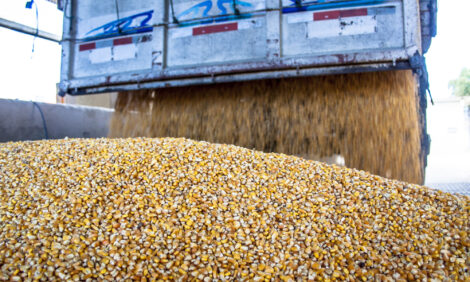



Neonatal pigs with low levels of viremia may benefit from PRRS vaccination

Q: High mortality in nursery pigs is often seen in herds positive for porcine reproductive and respiratory syndrome (PRRS) virus. What’s not clear is whether vaccination of viremic neonatal pigs — pigs carrying the virus — can help reduce mortality when they go to the nursery. Is there an answer?
JA: This has been a question in the industry for years. Some producers vaccinate viremic neonates even if it doesn’t curb nursery mortality because vaccination can still reduce virus shedding and minimize PRRS clinical signs.1 Others believe vaccinating viremic neonates has no benefit. This uncertainty prompted us to conduct a large field investigation so we could determine when and if vaccination is beneficial in piglets positive for the PRRS virus.
Q: How was the study set up?
JA: There were 3,000 sows on each farm, and all sows had been vaccinated three times annually with Fostera® PRRS, a modified-live vaccine developed by Zoetis.
When pigs were 4 to 5 days old, we collected processing fluids and tested for PRRS virus. At one of the four farms, we vaccinated pigs at processing with the same vaccine. Pigs at the other three farms were not vaccinated.
When pigs were 9 weeks of age — the end of the nursery period in this production system — we compared mortality on all the farms to see if it differed between vaccinated and unvaccinated pigs. In the vaccinated pigs, we looked to see if there was an association between mortality and the level of viremia.
Q: Explain how you tested for viremia.
JA: Processing fluids are aggregate samples from groups of pigs. We tested more than 260 samples using PCR (polymerase chain reaction) technology to get a cycle threshold (Ct) value. The Ct value reflects the level of viremia. Low numbers indicate more virus. High numbers indicate less virus.
Q: What were low and high Ct values in your study?
JA: The Ct values were as follows:
- Low Ct (more viremia): less than 24.2
- Moderate Ct (moderate levels of viremia): 24.2 or greater but less than 29.8
- High Ct (low levels of viremia): 29.8 or greater but less than 37
- Negative Ct (no viremia): 37 or greater
Q: And the findings?
JA: We concluded that Ct values based on processing fluids can be used to indicate an increased risk for nursery mortality from PRRS.
Vaccination has less benefit in pigs with higher levels of viremia, reflected by low Ct values. When the Ct value dropped by 1, there was a 2% increase in mortality when we considered all pigs in the study — vaccinated and unvaccinated. Among vaccinated pigs only, a drop in the Ct value by 1 resulted in a 2% increase in mortality.
Put another way — vaccinating pigs with a low Ct value was associated with an increase in mortality. However, vaccinating pigs positive for the PRRS virus with high Ct values may be beneficial.
Q: But what if piglets have moderate levels of viremia?
JA: Those pigs may not benefit directly from vaccination based on mortality, but there are the indirect benefits of less viral shedding and a reduction in the clinical signs of PRRS.
Q: Can anything be done to help pigs with higher levels of viremia?
JA: Producers need to work with their veterinarian to obtain Ct values based on PCR testing of processing fluids and plan a management strategy based on the results. If facilities are available, they may decide pigs with higher viremia levels should be segregated. Those pigs may need more intensified management because they will struggle more. They may be more predisposed to secondary bacterial infections that require antibiotic treatment.
Q: Is PRC testing of processing fluids accurate — and is it cost effective?
JA: PCR testing of processing fluids has been found to be more sensitive for detecting pigs positive for PRRS virus than PCR testing of blood sera or tail blood swabs.2 It can save a lot on costs too. The monthly cost to test 30 piglet serum samples pooled by five would pay for testing six aggregate processing-fluid samples, and aggregate processing-fluid samples can represent many hundreds of piglets.3
| References | ||||
|---|---|---|---|---|
| 1 Savard C, et al. | ||||
| (2016) | Efficacy of Fostera PRRS modified live virus vaccine against a Canadian heterologous virulent field strain of porcine reproductive and respiratory syndrome virus.. Can J Vet Res. | 2016 Jan;80(1):1-11. | ||
| 2 Lopez W, et al. | ||||
| (2017) | Monitor herds for PRRS using processing-fluids samples.. National Hog Farmer. | 2017 Nov 6. | ||
| 3 Lopez W, et al. | ||||
| (2018) | Porcine reproductive and respiratory syndrome monitoring in breeding herds using processing fluids.. Swine Health Produc. | 2018;26(3):146-150. | ||







